In a cylinderical region uniform magnetic field is present as shown in the figure. The cylinder is kept on a horizontal plane and its axis is horizontal. If a charge particle of mass m and charge q is projected horizontally with velocity v through a hole normal to the axis of the cylinder as shown in the diagram. An observer states the particle moves first undeviated and subsequently. oscillates inside cylinder along a horizontal diameter passing through axis of the cylinder time period

oscillates inside cylinder along a horizontal diameter passing through axis of the cylinder time period 4RqBmg
oscillates inside cylinder along a horizontal diameter passing through axis of the cylinder time period 2qRBmg
oscillates inside cylinder along a horizontal diameter passing through axis of the cylinder time period mgqBR
It is not possible for the particle to oscillates in this given situation
The correct Answer is:D
Consider the 2D view of the situation. Before any collision with the walls of cylinder, the particle will move in horizontal plane if qvB=mg.

But after 1st collision, qvB and mg starts acting is not able to move in horizontal plane.
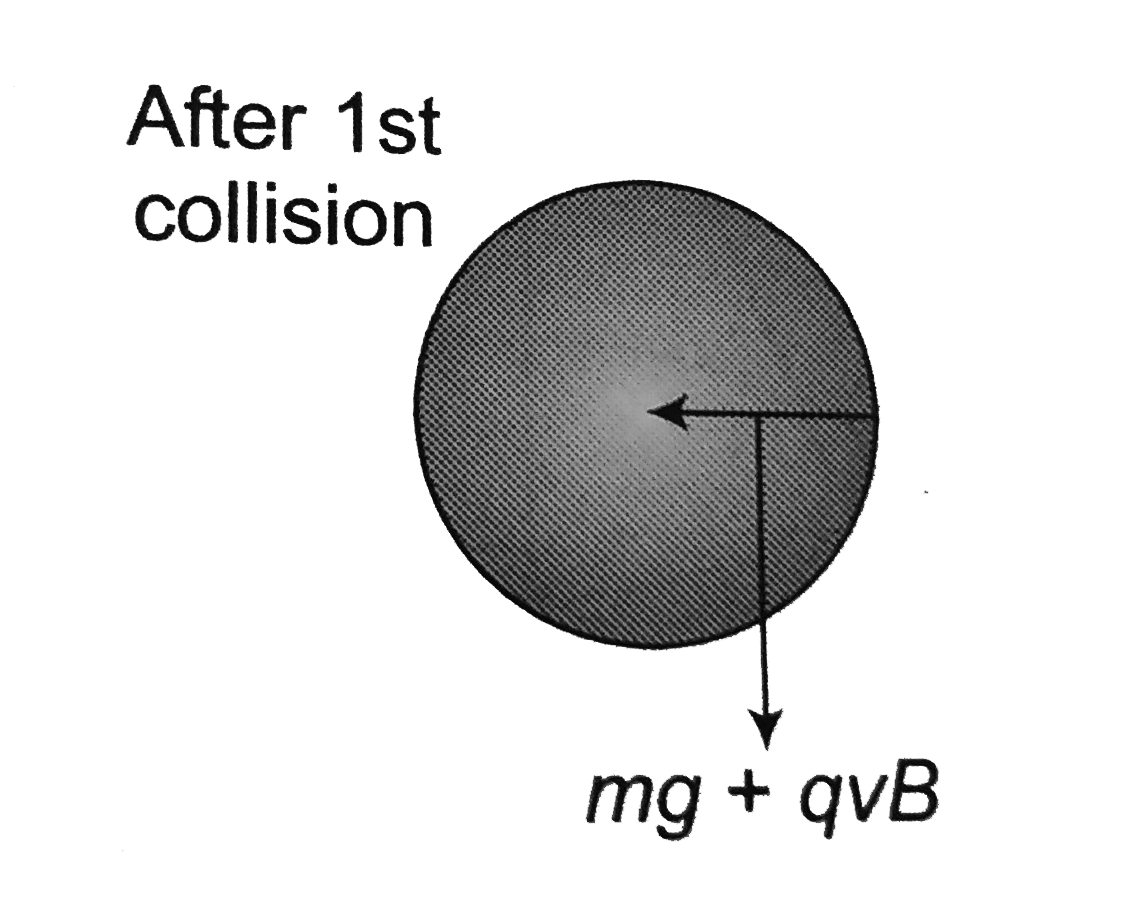
Topper's Solved these Questions
- BOOK - A2ZCHAPTER - SOURCE AND EFFECT OF MAGNETIC FIELDEXERCISE - Section B - Assertion Reasoning31videos
SOURCE AND EFFECT OF MAGNETIC FIELD
- BOOK - A2ZCHAPTER - SOURCE AND EFFECT OF MAGNETIC FIELDEXERCISE - AIPMTNEET Questions47videos
SOURCE AND EFFECT OF MAGNETIC FIELD
- BOOK - A2ZCHAPTER - SOURCE AND EFFECT OF MAGNETIC FIELDEXERCISE - Magnetic Field Due To Circular Arc69videos
SOURCE AND EFFECT OF MAGNETIC FIELD
- BOOK - A2ZCHAPTER - SEMICONDUCTOR ELECTRONICSEXERCISE - EXERCISE29videos
SEMICONDUCTOR ELECTRONICS
- BOOK - A2ZCHAPTER - WAVE OPTICSEXERCISE - Section D - Chapter End Test29videos
WAVE OPTICS
Similar Questions
A charge particle of mass m and charge q is projected with velocity v along y-axis at t=0.
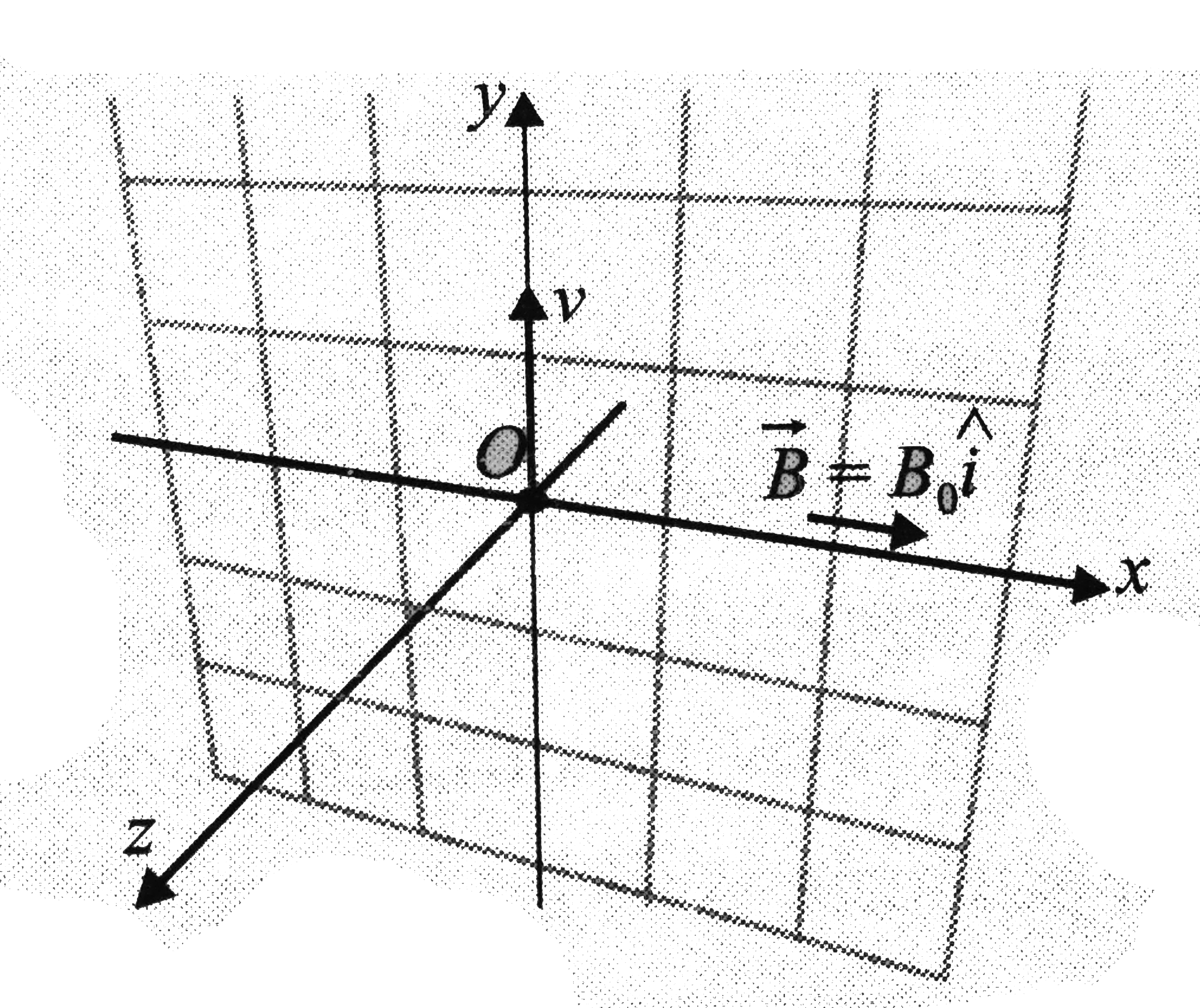
Find the velocity vector and position vector of the particle →v(t)and→r(t) in relation with time.View SolutionA particle is having mass m & charge +q is projected horizontally from point O. Electric field is present and is directed vertically downward .
View Solution
Knowledge Check
- Question 1 - Select One
A particle of mass m and charge Q moving with a velocity v enters a region on uniform field of induction B Then its path in the region is s
AAways circularBcircular, If v×B=0Ccircular,If v.B=0DNone of these - Question 2 - Select One
A particle enters the region of a uniform magnetic field as shown in figure. The path of the particle inside the field is shown by dark line. The particle is :
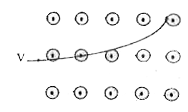 Aelectrically neutralBpositively chargedCnegatively chargedDinformation given is inadequate
Aelectrically neutralBpositively chargedCnegatively chargedDinformation given is inadequate - Question 3 - Select One
A 3D structure of current carrying wire is as shown in the figure.
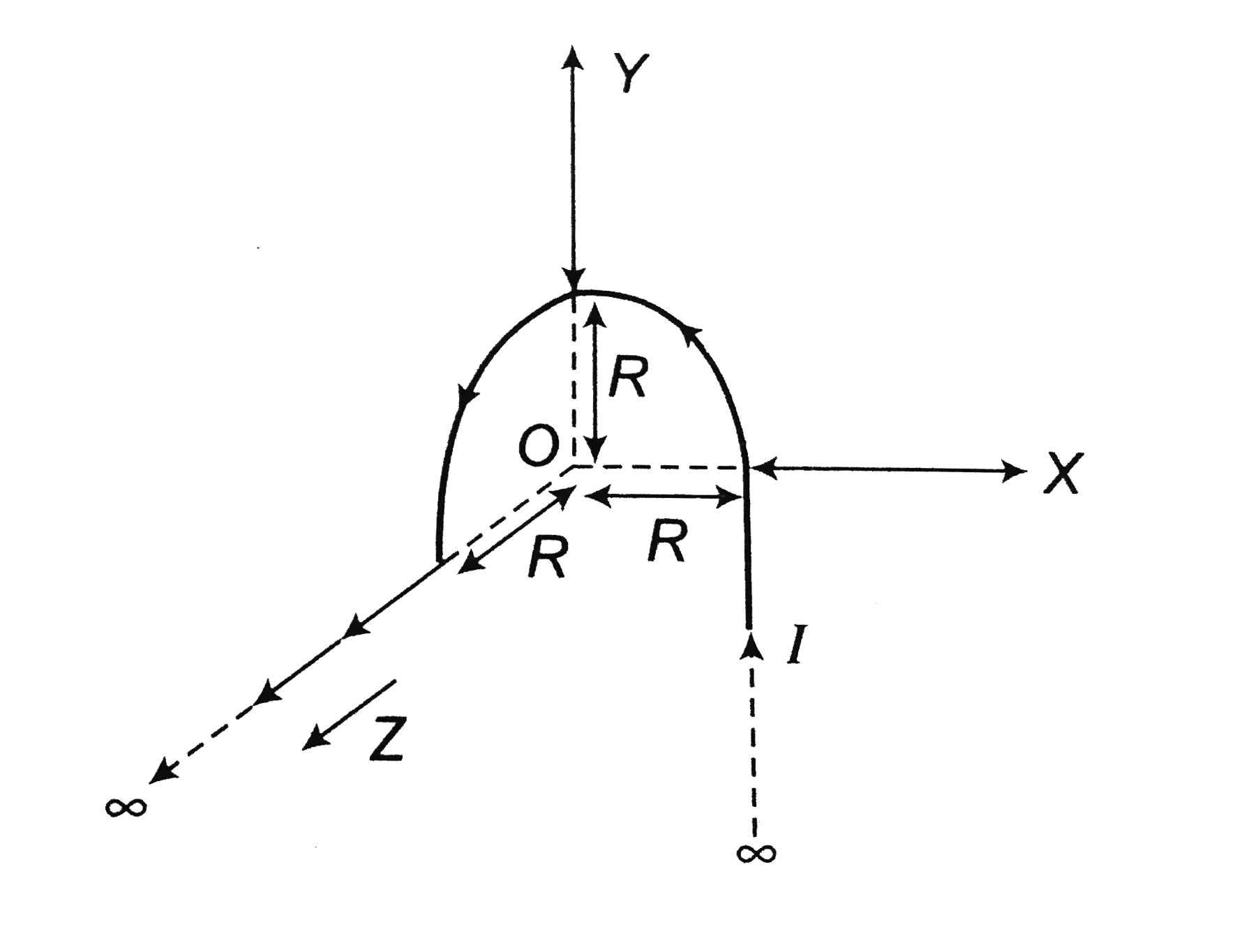
The magnetic force experienced by a charge particle of mass m and charge q, when it is crossing origin with velocity →v along positive Y-axis will beA(μ0Iqv8R+μ0Iqv4πR)ˆiBμ0Iqv8R[(1+2π)ˆi−ˆk]C−μ0Iqv8ˆkDzero
A particle of mass m and charge q moving with velocity v enters the region of uniform magnetic field at right angle to the direction of its motion. How does its kinetic energy get affected?
View SolutionFour particles enter a region of uniform magnetic field. Their trajectories are shown in figure. What are the signs of the charge of all four particles ?
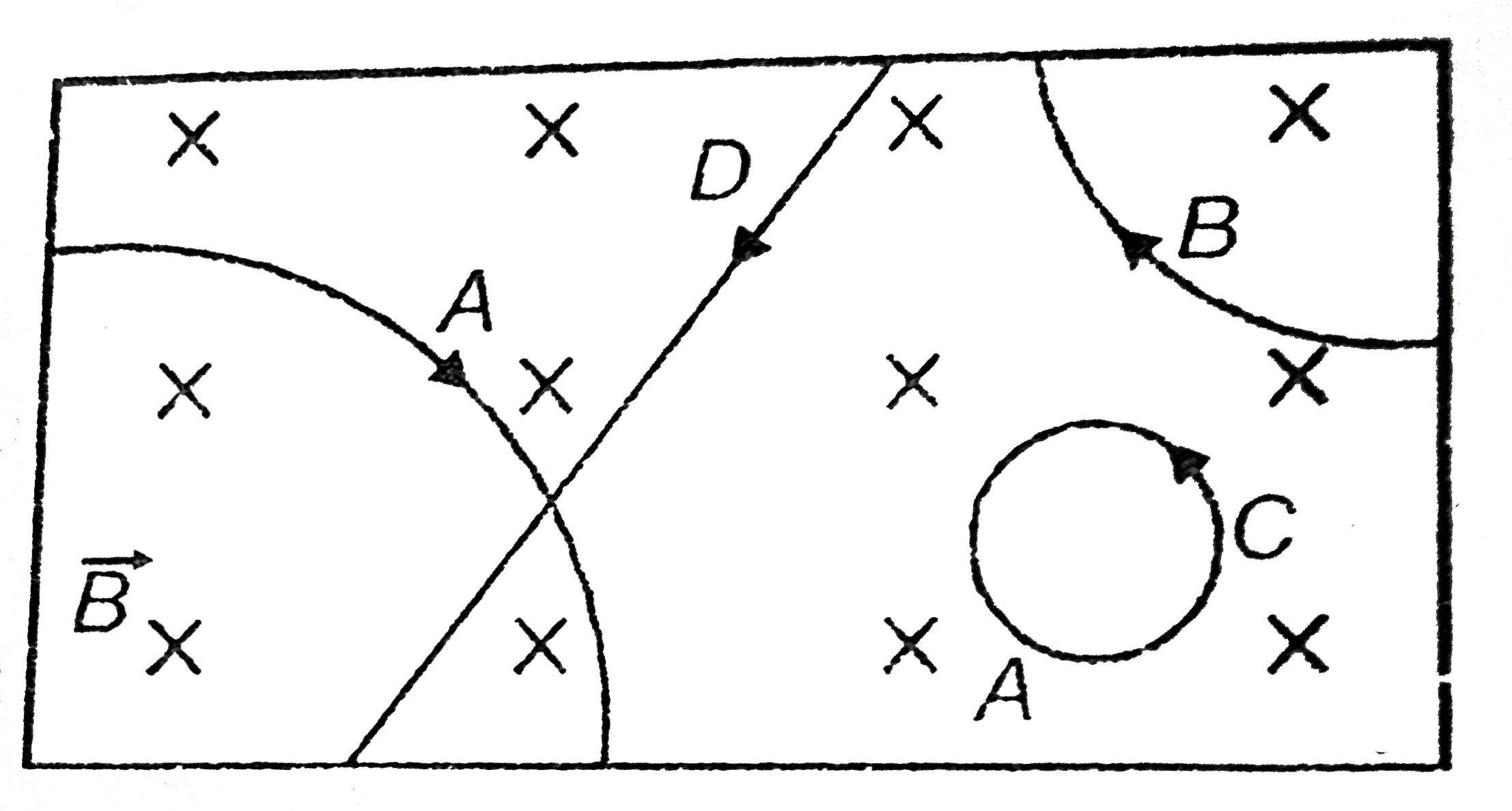 View Solution
View Solutionthe magnetic field shown in the figure consist of the two magnetic fields.
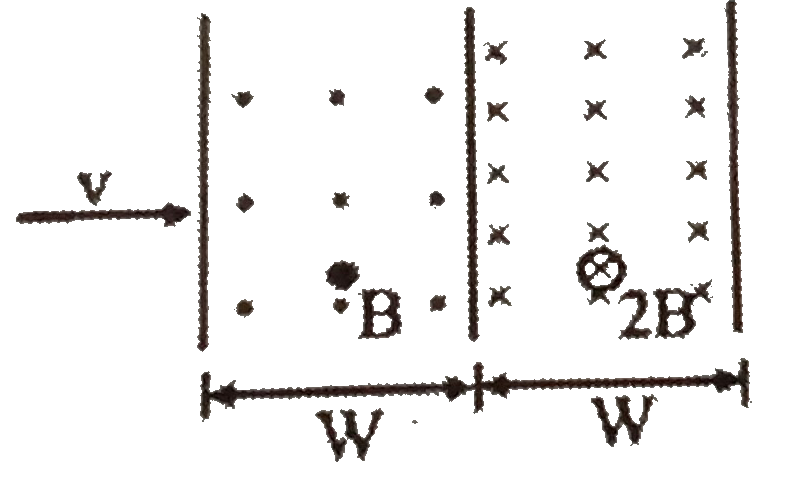
If v is the velocity just required for a charge particles of mass m and charge q to pass through the magnetic field. Particle is projected with velocity 'v' then how much time does such a charge spend in the magntic filed-View SolutionA positive charge particle of mass m and charge q is projected with velocity v as shown in Fig. If radius of curvature of charge particle in magnetic field region is greater than d, then find the time spent by the charge particle in magnetic field.
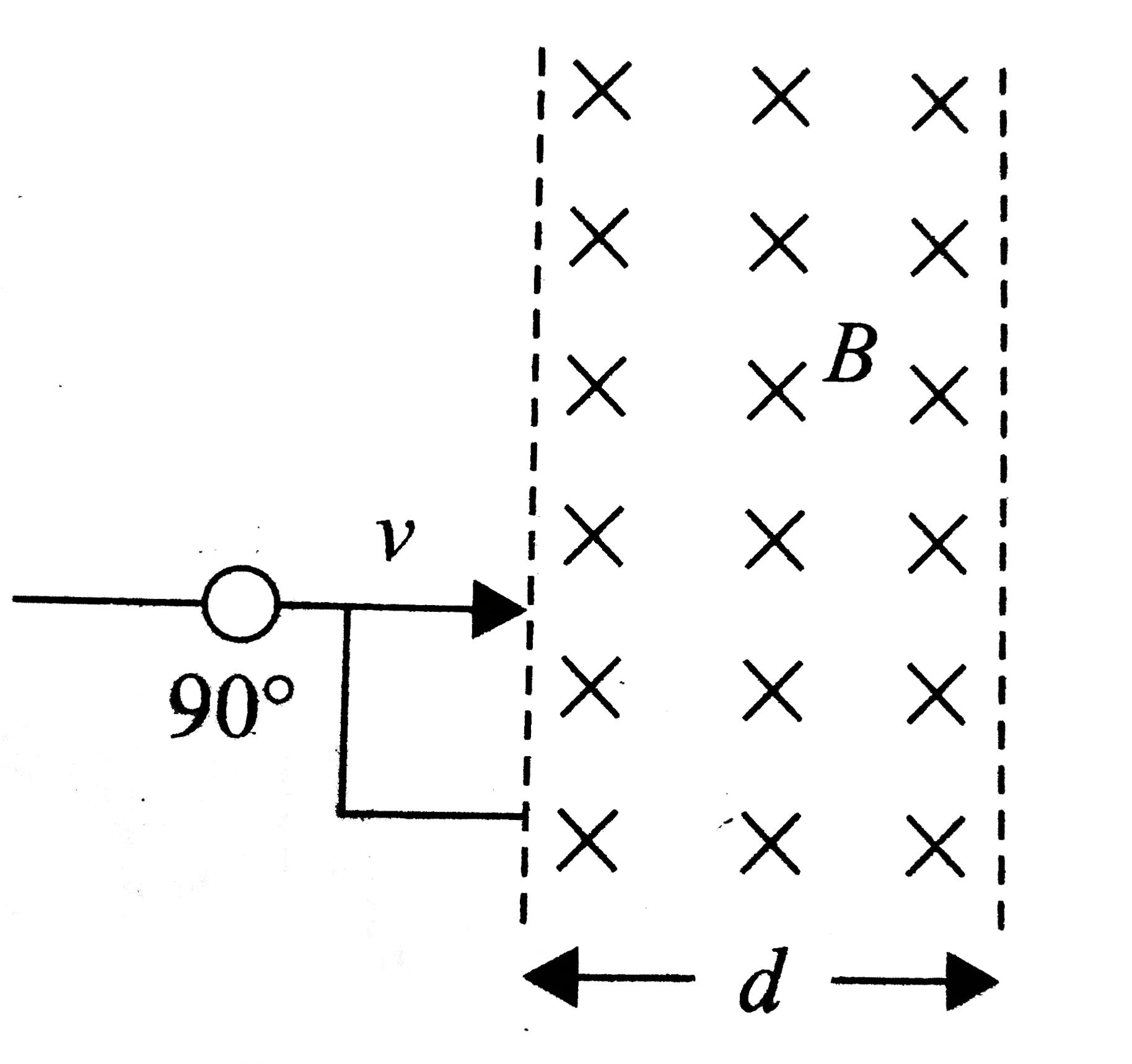 View Solution
View SolutionA plane metallic sheet is placed with its face parallel to lines of magnetic induction B of a uniform field. A particle of mass m and charge q is projected with a velocity v from a distance d from the plane normal to the lines of induction. Then, the maximum velocity of projection for which the particle does not hit the plate is
View Solution

